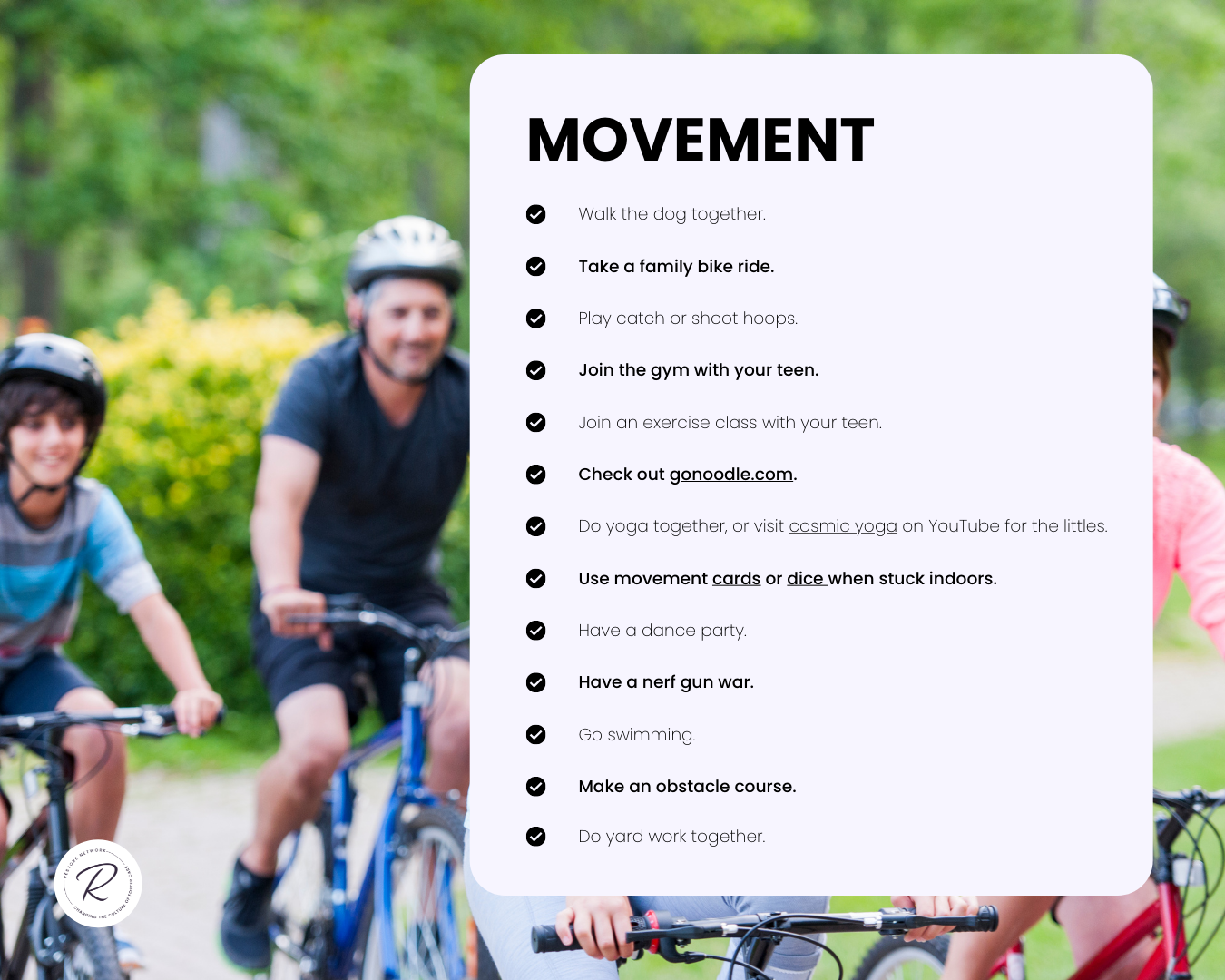by Ashley Bennett, Director of Trauma-Informed Care
Ok, now let’s talk about the benefits of movement.
You guys, I know our bodies need to move but sometimes, I’d prefer to sit on the couch, you know what I mean?
Ok, but in all honesty, our bodies were MADE to move. It’s pretty amazing what the human body is capable of when it sets itself in motion. And the benefits are well known. Moving your body benefits your physical health in countless ways but it also builds the brain and is an important piece of good mental health!
After a stress response has been triggered, the best thing you can do is move the body which signals to your brain that you’ve escaped the threat and returns yourself to a state of calm. So, think about those moments that your child seems triggered-after school, after a birth family visit, after a counseling appointment or case worker visit? Inserting movement following these experiences might help your child release those healthy hormones that would allow him to feel safe again.
If your child is struggling with sleep, try movement before bed.
If your child is struggling to focus on homework, try movement breaks.
There are countless ways to get your child moving and most children don’t need this encouragement-movement is one of the languages of childhood. But depending on your child’s story, they might need some added help.
Some of our children need more structure provided to their movement breaks-otherwise, it winds them up and increases their hyperactivity and reactiveness. So, playing catch with them or going for a bike ride together might be better than just setting them free in the backyard.
Some of our youth need more coregulation to get movement breaks in because they prefer sedentary activities or have only been exposed to these types of activities before they came to us.
In either case, our presence and guidance can be a strong support to encourage movement for our children. And we’ve said it all along in this training module, but here it is again, our adult bodies and brains need movement too!
Summertime is a natural time when children are out and about and moving more often so this is a great time to set up some new rituals for movement in your family that can hopefully continue even after school starts again. Over at my house right now, our summer movement breaks include nature walks, archery, cornhole competitions, riding bikes, swinging on a sensory swing, and playing baseball. What are yours?
See below for some examples on how to regulate through movement alongside your children and get your family moving!
*Movement is one of the Empowering Principles of Trust Based Relational Intervention (TBRI®). TBRI® is an attachment-based, trauma-informed intervention that is designed to meet the complex needs of vulnerable children. TBRI® uses Empowering Principles to address physical needs, Connecting Principles for attachment needs, and Correcting Principles to disarm fear-based behaviors. Learn more about TBRI® here: https://child.tcu.edu/

